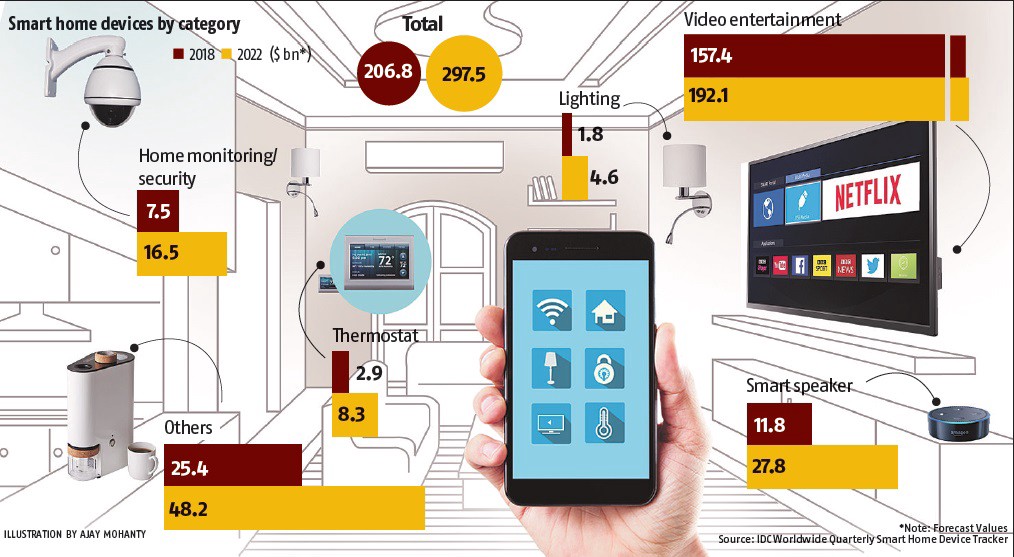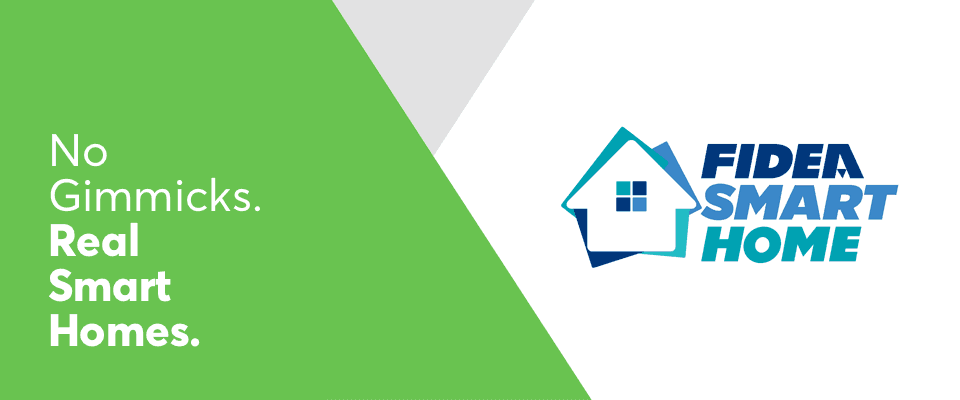Table of Content
- The Satellite IoT Communications Market – 2nd Edition
- Insurance Telematics in Europe and North America – 6th Edition
- The Global Cellular IoT Gateway Market – 6th Edition
- Berg Insight says 31 million North Americans used connected care solutions in 2022
- The Global Construction Equipment OEM Telematics Market – 5th Edition
Providers of DIY home security systems include SimpliSafe, Frontpoint, Ring , Yale , Arlo, Somfy, Scout Security, Canary, Minut and Wyze Labs. DIY security systems typically include self-monitoring as a standard feature and professional alarm monitoring services are offered as an option. ADT and Verisure are the two largest providers of professionally monitored alarm systems for homes and small businesses, with 6.3 million and 4.3 million customers respectively at the end of 2021. ADT is only active in the US while Verisure is active in 13 European countries and four countries in South America. The European market is still behind the North American, in terms of market penetration.
If such a device went into production, cameras and sensors could help prevent it from accidentally injuring an innocent bystander who’s just on the way to the fridge for a quick snack before dinnertime. We produce concise reports providing key facts and strategic insights about pivotal developments in our focus areas. Our vision is to be the most valuable source of intelligence for our customers.
The Satellite IoT Communications Market – 2nd Edition
Thanks to advancements in artificial intelligence, the smartest homes will be able to truly learn about their owners or occupants, eventually anticipating their needs. Developments in robotics will give us machines that offer a helping hand with cleaning, cooking and more. Central to all of this will be the data that smart homes collect, analyze and act upon, helping to turn the houses of the future from a mere collection of gadgets and accessories into truly “smart” homes. Of course, as our homes learn more about us, keeping them secure will become all the more important.

Smart home products thatmake people feel safer at home as well as enable time-savings and convenience are likely tobe popular among the many people that spend an increasing share of their time at home. “Vendors of smart home products in other segments need to develop solutions where connectivity offers time savings, cost savings or other benefits that consumers are willing to pay a premium for”, concludes Mr. Backman. A self-monitored security system is connected and informs the owner of the premises upon activation by sending a text message, email or push notification through a smartphone app.
Insurance Telematics in Europe and North America – 6th Edition
“Modern security camera solutions can distinguish between humans, pets, vehicles and other objects and notify the user only if there is an actual threat to the premises”, continues Mr. Bäckman. TIME may receive compensation for some links to products and services on this website.
EQ-3, Centrica, Deutsche Telekom and Somfy are estimated to be the largest vendors of whole-home systems in the region. The most popular smart home products include smart thermostats, smart light bulbs, smart security cameras, smart door locks, smart plugs and smart speakers. These products, which combined has sold in the hundreds of millions, are marketed by incumbent OEMs such as Signify, Resideo, Danfoss, Belkin, Chamberlain, Kwikset and Assa Abloy and newer entrants such as Ecobee, Sonos, Arlo, Netatmo, IKEA and Wyze Labs.
The Global Cellular IoT Gateway Market – 6th Edition
The number of Europeanhouseholds to adopt smart home systems is forecasted to grow at a compound annualgrowth rate of 20.2 percent during the next five years, resulting in 101.1 million smarthomes by 2024. The market value grew by 28.7 percent to € 16.6 billion (US$ 18.5 billion) in2019. The market value is forecasted to grow at a CAGR of 24.3 percent between 2019 and2024 to reach € 49.0 billion (US$ 54.9 billion) at the end of the forecast period. The market for whole-home systems is served by traditional home automation specialists, home security providers, telecom operators and DIY solution providers. On the North American market, interactive home security systems have emerged as the most common type of smart home systems. In Europe, traditional home automation systems and DIY solutions are more common as whole-home systems.

Then, once it gets the hang of a user’s preferences, it automatically plays just the right playlists or dims the lights before bedtime. “That’s really the next evolutionary step in true automation,” says John Clancy, head of Crestron’s residential business. The Covid-19 pandemic has so far had a very limited negative effect on the smart homemarket in North America and Europe. While sales in brick-and-mortar stores declined, onlinesales instead surged.
Berg Insight has its headquarters in Gothenburg, Sweden and serves clients around the world. This report in the IoT Research Series provides you with 310pages of unique business intelligence including 5-year industryforecasts and expert commentary on which to base yourbusiness decisions. According to a new research report from the IoT analyst firm Berg Insight, the number smart homes in Europe and North America reached 102.6 million in 2020. Berg Insight today released new findings about the market for home and small business security systems. Security cameras are now also commonly part of new home security system installations, as the price for such devices has dropped in recent years and developments of video software has enabled a greater value for home and small business owners.

Every device that’s connected to the Internet is a potential target for hackers. When we’re talking about devices that can unlock our homes from afar, peer into our living rooms using cameras, and collect our most sensitive and personal data, cybersecurity will become all the more vital. Any kind of massive breach that turns off consumers, says Daniel Cooley, chief strategy officer at electronics-component manufacturer Silicon Labs, could be catastrophic for the industry. Participants in the smart home industry are now focusing increasingly on the software side of the solutions to develop compelling use cases. Ease of installation, integration with other IoT devices and security will remain key priorities for consumers.
Innovations in artificial intelligence, for example, stand to upend almost everything in our lives, including our homes. You might already be using some kind of AI-powered voice-assistant gadget to get the latest news or weather forecast every morning. But in the smart home of the future, those AI platforms could serve as the brain for entire homes, learning about residents and coordinating and automating all of their various smart gadgets. IoT company Crestron, for example, is working on software that tracks a person’s habits, like which music they want to hear in the morning or which lights they want to be on at a certain time of day.
There was a total of 51.4 million smart homes in Europe at the end of 2020. The installed base in the region is forecasted to exceed 100 million homes at the end of 2024, representing a market penetration of 42 percent. The Covid-19 pandemic has so far had a very limited negative effect on the smart home market in the two regions.
A professionally monitored security system is connected to an Alarm Receiving Centre . When the system is activated, the ARC can dispatch a security patrol and contact emergency services. Smart vacuum cleaners like iRobot’s Roomba are already picking up after us, while products like the Aibo, a robotic dog for children, show how they might help keep us company like a pet. Robotic-furniture company Ori Living is working with Ikea on pieces that change based on your needs, getting the bed out of the way when you need a desk, or hiding your closet when it’s dinnertime. The fabric-covered bot is meant to slowly roll around your home, activating its retractable cameras and sensors to detect intruders, notify you of any harmful emissions or keep an eye on your pet. And computer-graphics company Nvidia is working on a smart robotic arm that can act as its owner’s personal sous chef, doing everything from slicing and dicing veggies to helping with cleanup; it could be particularly useful for busy parents or disabled users.
The most advanced smart home market is North America, having an installed base of 51.2 million smart homes at the end of the year. Between 2019 and 2020, the number of smart homes in North America grew by 18.7 percent year-on-year. By 2024, Berg Insight estimates that close to 78 million homes in North America will be smart, meaning 53 percent of all homes in the region. That, at least, is the utopian version of the smart home that exists 10 years out. But a decade from now, experts say, we’ll move from turning the lights on and off with our voices to total immersion in the Internet of Things .
All this learning and scanning that the smart home of the future will be doing may understandably raise privacy concerns. Indeed, some smart-home devices have already been targeted by hackers, whether to access the data they hold or to use them as tools in larger cybersecurity schemes. A bill put forth by Virginia Senator Mark Warner in March would push the government to set up minimum security requirements for smart devices used by federal agencies; such requirements could eventually become standard for the industry at large. Statistical data on adoption of smart home systems in Europe andNorth America. Smart Homes and Home Automation is the eighth consecutivereport from Berg Insight analysing the latest developments on theconnected home markets in Europe and North America.
A point solution will in many cases constitute the consumer’s first smart home purchase.Compared to whole-home systems, point solutions generated 62 percent of the combinedmarket revenues in North America and Europe. The most popular point solutions to date, interms of sold units, include smart thermostats, smart light bulbs, smart plugs, connectedsecurity cameras and voice controlled smart speakers. These products are marketed byincumbent OEMs such as Signify, Resideo, Danfoss, Belkin, Chamberlain, Kwikset and AssaAbloy and newer entrants such as Ecobee, Sonos, Arlo, Netatmo, IKEA and Wyze Labs. Inthe whole-home system market, traditional home automation vendors such as CrestronElectronics, Control4, Savant Systems, eQ-3 and Loxone are facing new competition ascompanies from adjacent industries have entered the market. The installedbase of smart home systems increased by 28.5 percent to reach 172.6 million at the yearend.

No comments:
Post a Comment